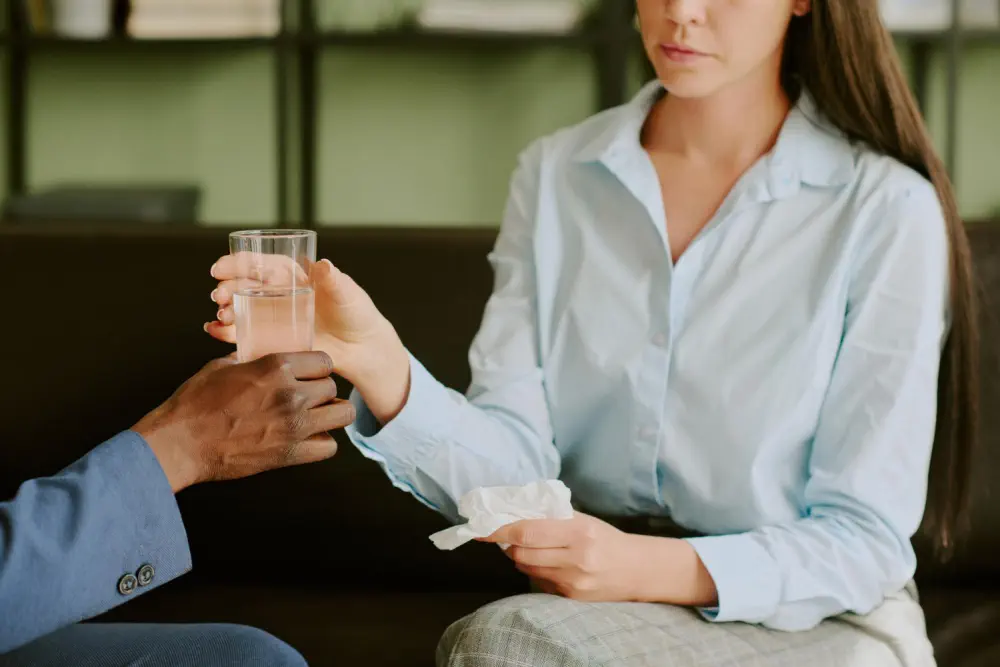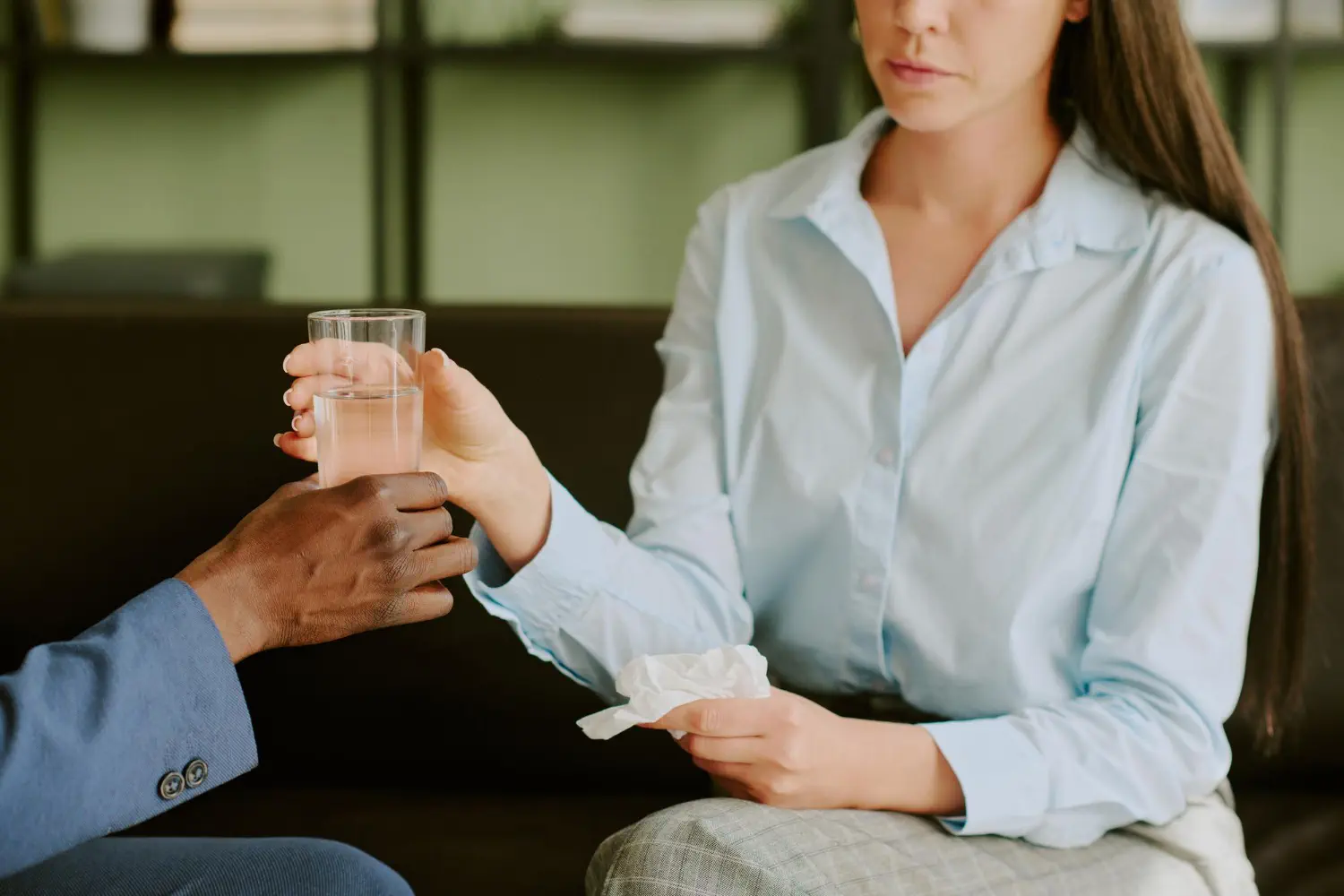We offer medical detox and multiple addiction treatment options in our
luxury treatment centres in Port Hope, Cobourg, and Ottawa.
What to Know About Steroid Withdrawal Symptoms
Stopping steroids after extended use can feel like your body has forgotten how to function normally. Steroid withdrawal symptoms often surprise people with their intensity and duration, whether you've been using anabolic steroids for muscle enhancement, prescription corticosteroids for medical conditions, or topical treatments for skin issues. Each type creates unique withdrawal challenges that affect your physical health, emotional well-being, and daily life. At the Canadian Centre for Addictions, we understand that recovery requires comprehensive support – you don't have to face this alone.
Key Takeaways
- Different Steroid Types: Anabolic steroids, corticosteroids, and topical treatments each create unique withdrawal patterns requiring specialized approaches.
- Withdrawal Symptoms: Physical effects include severe fatigue and hormonal disruption, while psychological symptoms range from depression to cognitive difficulties.
- Timeline Expectations: Symptoms typically peak within the first week, then gradually improve over 2-6 months, though some effects can persist longer.
- Medical Supervision Essential: Gradual tapering under professional guidance prevents dangerous complications and reduces severe withdrawal symptoms.
- Comprehensive Treatment: Successful recovery combines medical monitoring, psychological support, and long-term lifestyle changes to address underlying issues.
How Do Different Steroids Cause Dependence?
The Cycle of Anabolic Steroid Dependence
Anabolic steroids often start as a solution to a problem. Perhaps you want to build muscle faster, recover quicker, or compete at higher levels. The initial results can be remarkable – strength gains that you never imagined, muscle growth that impresses everyone around you, recovery times that let you train harder than ever before.
But, behind the scenes, your body's natural testosterone production gradually shuts down. Your body figures it doesn't need to make testosterone anymore because you're providing it artificially.

Steroid abuse often follows a predictable pattern:
- Starting with "beginner-friendly" cycles and modest goals
- Gradually increasing doses when results plateau
- Developing muscle dysmorphia – seeing yourself as smaller than you actually are
- Using steroids to manage feelings of inadequacy or depression
- Escalating to dangerous combinations and higher doses than ever intended
The shift from choice to necessity happens so gradually that you might not notice until you try to stop. When steroid use stops, testosterone levels plummet below normal ranges, creating a cascade of withdrawal effects. The psychological component often proves equally challenging, as users frequently tie their identity and self-worth to their enhanced physical capabilities.
The Hidden Dependency of Medical Corticosteroids
Your story might be different. Perhaps you never intended to become dependent on anything. Corticosteroids serve important medical functions, treating conditions like rheumatoid arthritis, inflammatory bowel disease, asthma, and autoimmune disorders. These medications can provide life-changing relief for people suffering from chronic inflammatory conditions.
However, even medically supervised use can lead to dependence. The adrenal glands naturally produce cortisol, but external corticosteroid use signals the body to reduce this production. Over time, the glands may struggle to resume normal function when medication is discontinued.
Steroid addiction in this context doesn't look like what most people imagine. You're not chasing a high or seeking escape. You're trying to maintain the quality of life these medications provided. But dependence can develop anyway. Risk factors include:
- Chronic pain conditions requiring long-term treatment
- History of substance use disorders
- Inadequate medical supervision during treatment
- Self-adjusting medication doses beyond prescribed amounts
- Using steroids to cope with stress or emotional difficulties
The legitimacy of your original need doesn't protect you from developing problematic patterns. Your body doesn't distinguish between "good" and "bad" reasons for dependence.
What Causes Topical Steroid Withdrawal

Topical steroid withdrawal occurs when skin becomes dependent on external corticosteroids for normal function. This condition, also called red skin syndrome, develops when prolonged use of medium to high-potency topical steroids disrupts the skin's natural processes. The skin produces its own cortisol locally, and topical steroids can suppress this production. When treatment stops, the skin often experiences rebound inflammation that exceeds the severity of the original condition.
Risk factors that make topical steroid withdrawal more likely:
- Using potent steroids daily for three months or longer
- Applying treatments to sensitive areas like your face or genitals
- Using stronger medications than your condition actually requires
- Continuing treatment well beyond recommended timeframes
- Stopping abruptly after prolonged use instead of a gradual reduction
The skin produces its own cortisol – something most people don't realize. Topical steroids can suppress this natural production, creating a localized dependency that mirrors what happens with systemic steroids and your adrenal glands. When you stop, your skin rebels with burning, itching, and widespread redness that can spread far beyond the areas you originally treated.
What Are the Steroid Withdrawal Symptoms and How Do They Evolve?
The knowledge of what you will experience and when you might expect relief can provide some comfort during the most challenging phases of withdrawal. Steroid withdrawal symptoms vary tremendously between individuals, but recognizable patterns emerge based on which steroids you've been using and how long you've been taking them.
Common Physical Symptoms and Their Progression
Energy depletion hits almost everyone coming off steroids, but the intensity can shock you. This isn't ordinary tiredness – it is bone-deep exhaustion that makes climbing stairs feel like running a marathon. Getting dressed becomes an accomplishment, while basic work tasks feel insurmountable. For anabolic steroid users, this fatigue often peaks during the first two weeks and gradually lessens over the months. Your natural testosterone production has to restart from scratch.
Physical symptoms vary dramatically by steroid type:
| Anabolic Steroids | Corticosteroids | Topical Steroids |
| Crushing fatigue and weakness | Adrenal insufficiency signs | Burning, stinging skin |
| Muscle and joint aches | Nausea and persistent vomiting | Angry red inflammation |
| Complete loss of libido | Dangerously low blood pressure | Skin peeling and flaking |
| Insomnia despite exhaustion | Severe, unrelenting headaches | Spreading to new areas |
| Wild mood fluctuations | Joint and muscle pain | Extreme sensitivity to touch |
Your withdrawal timeline might look something like this:
- Days 1-3: You start noticing something's wrong – energy drops, sleep gets weird
- Week 1: Symptoms hit full force – this is often the worst part
- Weeks 2-4: Very gradual improvement begins, though bad days still happen
- Months 1-6: Continued recovery with ups and downs
Hormonal chaos affects every aspect of your daily life. Men coming off anabolic steroids might experience erectile dysfunction that creates relationship stress. Women often deal with menstrual irregularities that can persist for months. Everyone struggles with mood swings that strain friendships and family relationships.
The pain patterns differ, too. Anabolic steroid withdrawal often brings muscle and joint pain as your enhanced recovery abilities disappear. You might feel like you've aged decades overnight. Corticosteroid withdrawal can trigger the return of your original inflammatory symptoms, but often worse than before.
Sleep becomes challenging. Anabolic steroid users frequently develop severe insomnia, lying awake for hours despite physical and emotional exhaustion. Your mind races while your body feels like lead. Corticosteroid withdrawal can swing the opposite direction – you might feel drowsy all day but still can't get restorative sleep at night.
Psychological and Emotional Changes Through the Withdrawal Process

The mental health impact of steroid withdrawal catches many people completely off guard. You might have expected physical discomfort, but the psychological symptoms can feel devastating and endless.
Depression during steroid withdrawal isn't just feeling sad or disappointed. A landmark study by Pope and Katz published in Archives of General Psychiatry (1994) found that 23% of anabolic steroid users experienced major mood disorders during use, and research consistently identifies depression as the most dangerous withdrawal symptom, with documented cases of severe depressive episodes and suicidal ideation.
The emotional fluctuations often include:
- Depression is so severe that it's hard to get out of bed
- Anxiety that makes your heart race over small problems
- Irritability that strains every relationship in your life
- Mental fog that makes simple decisions feel impossible
- Complete loss of motivation for things you used to enjoy
- Social withdrawal because everything feels too overwhelming
- Sleep problems that make everything else worse
For many people, steroids had become tied to their identity. Athletes might feel like they've lost their competitive edge permanently. Bodybuilders often struggle with body dysmorphia as muscle mass decreases. Even medical patients can feel like they've lost their tool for managing life's challenges.
The psychological timeline follows its own cruel pattern:
- Week 1: Mood changes start, anxiety creeps in
- Weeks 2-3: Depression typically reaches its worst point
- Month 1: Emotional stability begins to return, slowly
- Months 2-6: Continued improvement with occasional setbacks
- 6+ Months: Most people feel emotionally stable again, though some effects linger
One of the hardest parts is that people around you might not understand why you can't just "snap out of it." They see withdrawal as a choice you made, not a medical condition requiring patience and support.
Steroid Withdrawal Syndrome Recognition and Red Flags
Steroid withdrawal syndrome occurs when multiple symptoms appear simultaneously, creating a recognizable pattern of physical and psychological distress. This syndrome represents the body's coordinated response to the absence of external hormones it has grown dependent on.
Sometimes steroid withdrawal symptoms mimic or worsen your original condition. If you used corticosteroids for arthritis, returning joint pain might be withdrawal, disease progression, or both. This confusion can tempt you to restart medication before giving your body adequate time to recover.
These warning signs demand immediate medical attention:
- Any thoughts about harming yourself or ending your life
- Depression so severe you can't handle basic self-care
- Chest pain, heart racing, or feeling like you're having a heart attack
- Severe dehydration because you can't keep food or fluids down
- Dizziness or fainting from blood pressure changes
- Panic attacks that feel completely out of control
- Signs of adrenal crisis: confusion, extreme weakness, very low blood pressure
The timing matters too. Withdrawal symptoms typically show up within days of stopping steroids. If symptoms appear weeks later, you might be dealing with something else entirely. When in doubt, seek medical evaluation rather than trying to diagnose yourself. Trust your instincts. If something feels seriously wrong, it probably is. You know your body better than anyone else, and medical professionals take steroid withdrawal seriously when patients express genuine concern.
How Can You Safely Manage Steroid Withdrawal?

Managing steroid withdrawal successfully requires more than just toughing it out. The complexity of hormonal disruption means that professional support usually makes the difference between a manageable recovery and months of unnecessary suffering.
Safe Discontinuation and Medical Oversight
Steroid detox under medical supervision dramatically reduces your risk of dangerous complications. Unlike detox from alcohol or opioids, steroid detox focuses on supporting your body's return to natural hormone production rather than clearing toxins from your system.
Going through it alone rarely works out well. Your doctor can create a tapering schedule that gives your body time to adjust gradually. For anabolic steroids, this might involve post-cycle therapy with medications that help restart testosterone production. For corticosteroids, slow dose reduction over weeks or months prevents adrenal crisis.
Medical supervision typically includes:
- A comprehensive health assessment before you stop
- Customized tapering plan based on your specific usage pattern
- Regular blood tests to track hormone recovery
- Blood pressure and heart monitoring
- Mental health evaluations to catch depression early
- Emergency protocols if serious complications develop
The blood work tells the real story of your recovery. Testosterone levels, cortisol production, liver function – these numbers guide treatment decisions and help predict your timeline for feeling normal again.
Smart harm reduction strategies:
- Never quit steroids abruptly without medical clearance
- Optimize your nutrition to support natural hormone production
- Prioritize sleep even when it feels impossible
- Avoid alcohol and other substances that complicate recovery
- Prepare your family and friends for what to expect
- Remove remaining steroid supplies to avoid impulsive decisions
Your support system needs honest information about what withdrawal looks like. When you're depressed and exhausted, having people who understand your timeline and symptoms can make the difference between pushing through and giving up.
Active Treatment and Symptom Management
Once steroid withdrawal symptoms appear, treatment focuses on keeping you safe and comfortable while your body remembers how to function independently. This isn't about making symptoms disappear overnight – it's about managing them until natural recovery occurs.
Depression and Anxiety Management:
- Antidepressants, often SSRIs, for persistent mood problems
- Short-term anti-anxiety medications for panic symptoms
- Regular counselling to process the emotional challenges
- Careful monitoring for suicidal thoughts or behaviors
Physical Symptom Relief:
- Pain management for muscle and joint discomfort
- Sleep aids when insomnia becomes dangerous
- Anti-nausea medications and appetite stimulants
- Hormone replacement therapy in specific situations
Supporting Natural Recovery:
- Post-cycle therapy for anabolic steroid users
- Adrenal support during corticosteroid withdrawal
- Nutritional supplements that support hormone production
- Regular monitoring to track improvement
Sometimes withdrawal becomes severe enough to require hospitalization. Severe depression with suicide risk, adrenal crisis from stopping corticosteroids too quickly, or dangerous dehydration all warrant inpatient care. Don't view hospitalization as failure – view it as taking your recovery seriously.
Psychological support addresses the root causes:
- Individual therapy helps you understand what drove your steroid use in the first place. For athletes, this might involve working through perfectionism and identity issues. For medical patients, it could mean developing better coping strategies for chronic conditions.
- Group therapy connects you with others facing similar struggles. Hearing someone else describe exactly what you're experiencing reduces the isolation that makes withdrawal feel hopeless. These connections often continue long after formal treatment ends.
- Family therapy repairs relationships damaged by steroid use and educates loved ones about realistic recovery expectations. When your family understands that recovery takes months, not weeks, they can provide appropriate support during difficult periods.

Long-term Recovery, Relapse Prevention, and Holistic Health
Recovery extends far beyond stopping steroid use. The real work involves rebuilding your relationship with health, fitness, and self-worth without chemical assistance.
For athletes and fitness enthusiasts, this means discovering what your body can accomplish naturally. Yes, it's less dramatic than steroid-enhanced performance, but it's authentic and sustainable. Learning evidence-based training and nutrition approaches helps you maximize your natural potential.
Natural approaches to hormone optimization:
- Regular exercise at an appropriate intensity for your recovery stage
- Stress management through meditation, yoga, or other relaxation techniques
- Protecting 7-9 hours of quality sleep every night
- Nutrition that supports natural hormone production
- Limiting alcohol and avoiding processed foods
- Regular health checkups to monitor progress
Medical patients need comprehensive approaches to managing their underlying conditions. This might involve working with specialists to find non-steroid treatments, developing better stress management skills, or addressing mental health issues that contributed to medication dependence.
Supporting Loved Ones Through Recovery
Recovery affects entire families, not just individuals. Your mood swings, fatigue, and emotional struggles impact everyone around you. Family members often feel helpless, frustrated, or resentful about the situation. Clear communication helps enormously. Explain what you're experiencing and realistic timelines for improvement. When your partner understands that your irritability stems from hormonal chaos, they're more likely to respond with patience instead of taking it personally.
Creating a recovery-friendly environment:
- Remove any remaining steroid supplies from your home
- Unfollow social media accounts that promote unrealistic physiques
- Find new social activities that don't revolve around appearance or performance
- Develop hobbies and interests outside of fitness or your original steroid goals
- Build relationships with people who support your recovery
What's Your Next Step in Steroid Withdrawal?

Steroid withdrawal symptoms touch every aspect of your life – physical, emotional, and social. Recovery requires tremendous patience, professional support, and a willingness to rebuild your relationship with health and self-worth from the ground up. The process can feel overwhelming, but thousands of people have walked this path successfully and found fulfilling lives on the other side.
Your withdrawal experience will be unique to you, but you don't have to face it alone. Whether your steroid use started as medical treatment or performance enhancement, professional guidance dramatically improves your chances of safe, successful recovery. At the Canadian Centre for Addictions, we provide the comprehensive support necessary for lasting recovery from steroid dependence. We understand your struggles because we've helped countless others navigate these same challenges. Recovery is possible, and it's worth fighting for.
If you're ready to take the first step toward freedom from steroid dependence, we're here to help. Contact us today at 1-855-499-9446 to learn more about our specialized treatment programs and start your journey toward authentic wellness.
FAQ
How long does steroid withdrawal last?
Steroid withdrawal timeline varies significantly based on which steroids you used, dosage levels, and duration of use. Anabolic steroid withdrawal typically peaks within the first two weeks and gradually improves over 2-6 months, though some hormonal effects can persist for a year or longer.
How to prevent steroid withdrawal?
Preventing steroid withdrawal involves gradual dose reduction under medical supervision rather than abrupt cessation. Never attempt to taper steroids on your own – professional guidance ensures both safety and effectiveness.
Are steroid withdrawal symptoms dangerous?
Some steroid withdrawal symptoms can indeed be dangerous, particularly severe depression leading to suicidal thoughts and adrenal insufficiency from corticosteroid withdrawal. This is why professional supervision during withdrawal is strongly recommended rather than attempting self-managed discontinuation.
Will my natural hormone production return to normal?
Most people do recover normal hormone function after steroid withdrawal, though the timeline varies considerably. Anabolic steroid users typically see testosterone levels begin to recover within weeks to months, with full recovery taking up to a year or longer in cases of prolonged use.
How can I tell if my symptoms are withdrawal or my original condition returning?
Distinguishing steroid withdrawal syndrome from underlying condition flare-ups can be challenging and often requires medical evaluation. Withdrawal symptoms typically appear within days of stopping steroids and may affect areas that weren't originally problematic.






